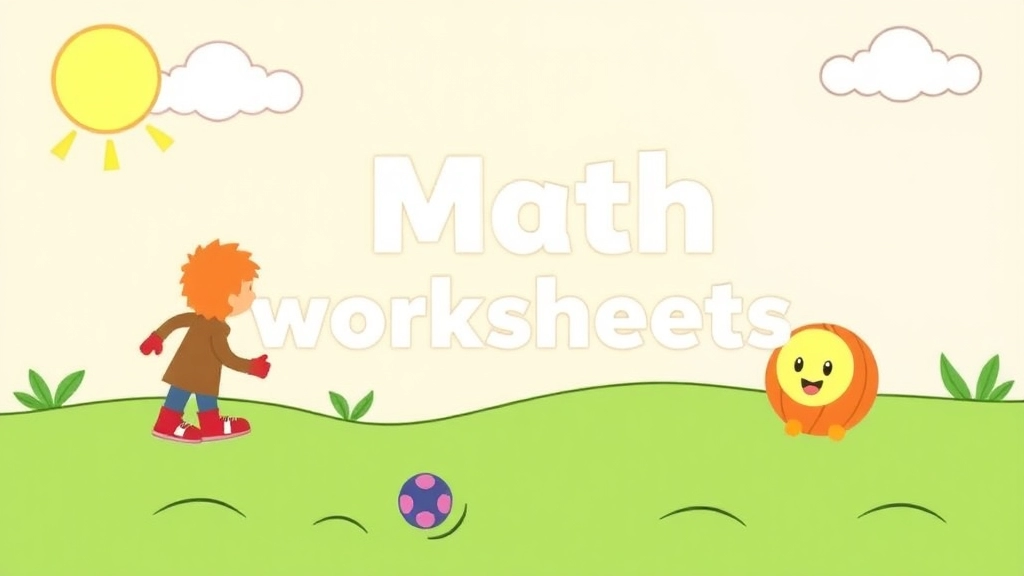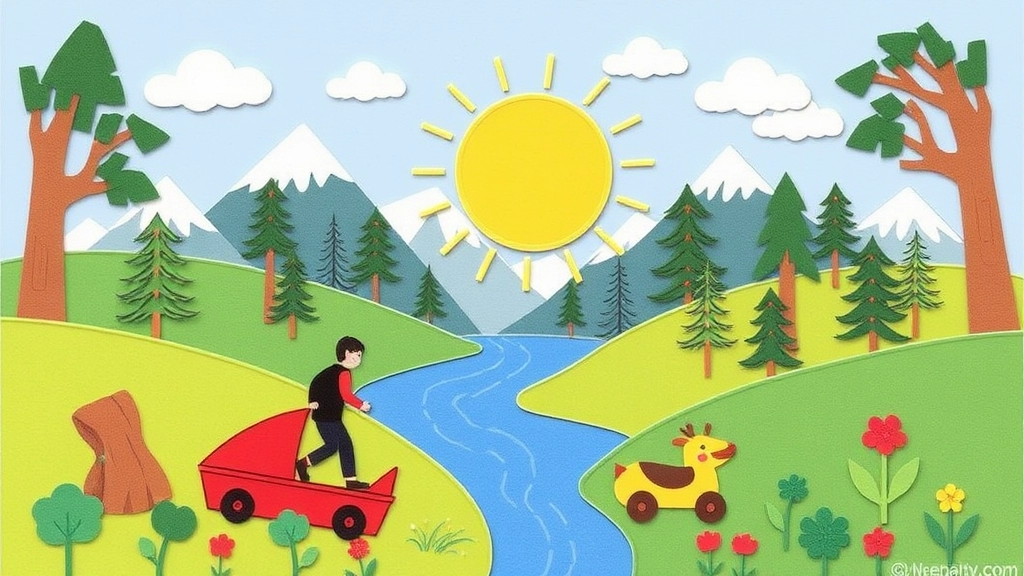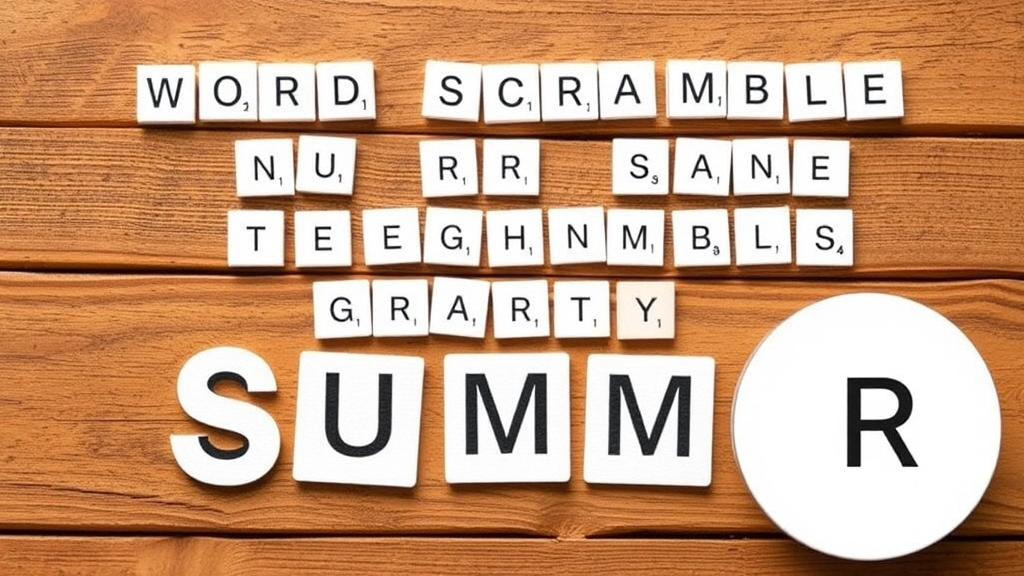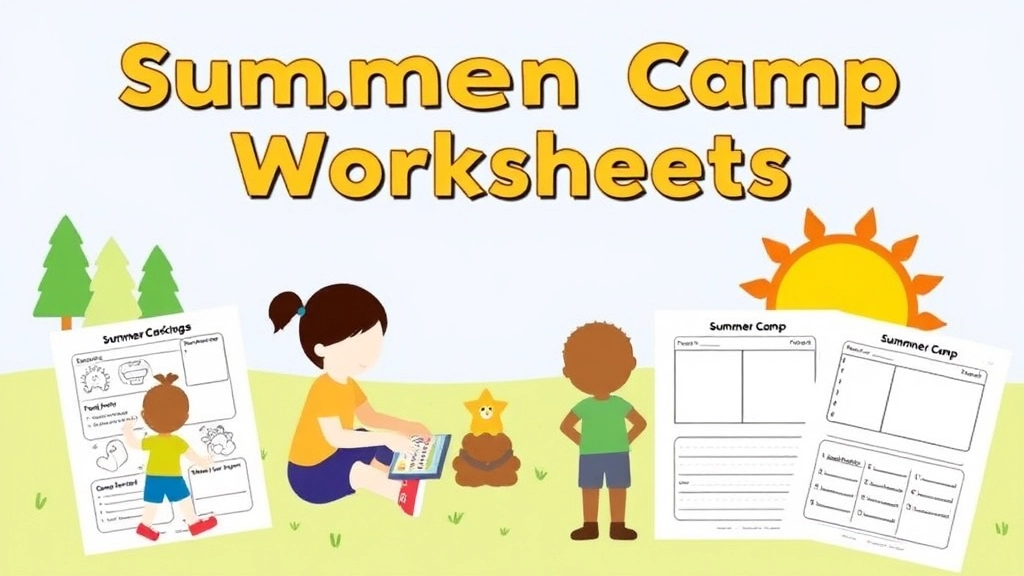Summer Camp Worksheets
Summer camp is the perfect time for kids to have fun while keeping their brains active, and “Summer Camp Worksheets” are ideal for this. These printable resources are designed to be both educational and enjoyable, helping children maintain their academic skills during the break. From engaging math exercises to creative writing prompts, these worksheets cater to various age groups and interests, ensuring every child finds something they love.
Whether it’s a color-by-number activity or a challenging word scramble, summer-themed worksheets make learning feel like a game. They are perfect for keeping kids busy during downtime at camp or even on long road trips. So, let’s dive into the world of summer camp worksheets and explore the many ways they can make learning a part of your child’s summer adventure.
Fun Printable Summer Worksheets for Kids
Alright, parents and teachers, we all know the struggle: keeping kids entertained and learning during the summer. It’s a real challenge, right? But here’s the good newsâfun printable summer worksheets for kids can be your secret weapon.
Why Printable Worksheets?
First off, why go for printable worksheets? Simple. They’re:
- Accessible: You can print them at home or at the library.
- Portable: Perfect for road trips, summer camps, or just a lazy day at home.
- Engaging: They can be tailored to your kid’s interests.
Types of Worksheets
Now, let’s dive into the types of worksheets you can use to keep the summer brain drain at bay:
- Colouring Pages: Who doesn’t love a good colouring session? It’s relaxing and boosts creativity.
- Puzzles and Mazes: These are fantastic for developing problem-solving skills.
- Craft Templates: Think cut-and-paste activities that can double as decorations for their room.
- Seasonal Math Problems: Make math fun by incorporating summer themes like ice cream and beach balls.
Real-Life Examples
Let me share a quick story. Last summer, my niece was getting bored out of her mind. So, I printed out a bunch of beach-themed worksheets. We had colouring pages of sandcastles, word searches with summer terms, and even some simple math problems involving seashells. She was hooked! Not only did it keep her busy, but she also learned a ton.
Benefits
Here’s why these worksheets are a game-changer:
- Educational: Keeps the learning going even when school’s out.
- Interactive: Many worksheets encourage kids to think critically and creatively.
- Customisable: You can find worksheets for all age groups and skill levels.
Pro Tips for Parents and Teachers
To get the most out of these worksheets:
- Mix It Up: Don’t stick to just one type. Variety keeps things interesting.
- Set a Routine: Dedicate a specific time each day for worksheet activities.
- Get Involved: Sit down with your kids and work on the worksheets together. It’s a great bonding experience.
Where to Find Them
You might be wondering where to get these magical worksheets. Here are a few places:
- Educational Websites: Sites like Education.com and Teachers Pay Teachers offer a plethora of options.
- Pinterest: A treasure trove of free printable worksheets.
- Local Libraries: Many libraries offer free printables as part of their summer reading programs.
Engaging Math Worksheets for Summer Camps

Are you worried about keeping the kids sharp in maths over the summer?
I get it.
Summer camps are all about fun, but that doesn’t mean learning has to take a back seat.
Why Maths Worksheets?
Kids often lose some of what they’ve learned over the school year during the summer.
It’s called the “summer slide.”
But we can stop that.
Math worksheets can be engaging and fun, especially when they’re designed with summer in mind.
What Makes These Worksheets Special?
Summer-themed: Think ice cream cones, beach balls, and sunshine.
Interactive: Not just boring sums. We’re talking puzzles, games, and challenges.
Levels: Suitable for different age groups and skill levels.
Types of Math Worksheets
1. Basic Arithmetic
- Addition and subtraction with beach ball graphics.
- Multiplication tables with ice cream scoops.
- Division problems with sandcastles.
2. Geometry
- Shape recognition with seashells.
- Measuring angles using surfboards.
- Finding perimeters and areas of fun summer objects.
3. Word Problems
- Real-life scenarios like counting beach towels or sharing ice lollies.
- Problems that make kids think and apply their maths skills.
How to Use These Worksheets
Daily Practice: Just 10-15 minutes a day can make a huge difference.
Group Activities: Turn it into a game or competition. Kids love a bit of friendly rivalry.
Rewards: Stickers, extra playtime, or a small treat can motivate kids to complete their worksheets.
Real Stories
Last summer, I introduced these worksheets at a local camp.
The kids loved them.
One mum told me her son, who hated maths, started asking for more worksheets.
Imagine that!
Summer-Themed Reading Comprehension Exercises
Alright, let’s dive straight into it. Summer-themed reading comprehension exercisesâwhat’s the deal? As a parent or camp organiser, you might be wondering, “How do I keep kids engaged in learning during summer without them feeling like it’s school all over again?” Trust me, I get it. No one wants to hear the dreaded “I’m bored!” every five minutes. So, let’s tackle this head-on with some fun, engaging, and educational activities.
Why Summer-Themed Reading Comprehension?
First off, why even bother with reading comprehension exercises in the summer? Simple. Reading skills can take a nosedive during the long break. But, if you make it fun and relevant, kids won’t even realise they’re learning. Here’s why summer-themed reading comprehension is a game-changer:
- Engagement: Kids are naturally more interested in topics that relate to their current experiences. Summer themes resonate because, well, it’s summer!
- Retention: By incorporating summer themes, kids are more likely to retain what they read and understand.
- Skill Building: Keeps those critical reading and comprehension skills sharp.
What Makes a Good Summer-Themed Reading Exercise?
So, what should you look for in a solid summer-themed reading comprehension exercise? Here are some key elements:
- Relatable Content: Think beach trips, ice cream, camping, and outdoor adventures.
- Interactive Elements: Questions, puzzles, and activities that make reading a two-way street.
- Age-Appropriate Texts: Tailor the difficulty level to the age group you’re working with.
Examples of Summer-Themed Reading Exercises
Alright, enough theory. Let’s get into some practical examples. Here are a few exercises that have worked wonders:
- Beach Adventure Stories:
- Story: A short tale about a day at the beach.
- Questions: What did the kids find in the sand? Why is sunscreen important?
- Activity: Draw your perfect beach day.
- Camping Under the Stars:
- Story: A family goes camping and encounters wildlife.
- Questions: What animals did they see? How did they set up their tent?
- Activity: Create a checklist for a camping trip.
- Ice Cream Factory Tour:
- Story: A behind-the-scenes look at how ice cream is made.
- Questions: What are the steps to make ice cream? What flavours did they try?
- Activity: Design your own ice cream flavour.
Tips for Making Reading Fun
Now, you might be thinking, “This sounds great, but how do I actually make it fun?” Here are some tips:
- Incorporate Games: Turn questions into a quiz game.
- Use Visuals: Pictures and illustrations can make a huge difference.
- Reward Systems: Stickers, certificates, or even a small treat can go a long way.
Real Stories, Real Impact
Let me share a quick story. Last summer, I introduced a beach-themed reading exercise to a group of kids at a local camp. Initially, they were scepticalâreading during summer? No thanks! But once they got into the story and started answering questions about what they’d read, they were hooked. By the end of the session, they were begging for more stories. It was a win-win; they had fun, and their reading skills stayed sharp.
Creative Writing Prompts for Summer Camp

Ever struggled to get kids excited about writing during summer camp?
I get it.
Kids want to be outside, not stuck with a pencil and paper.
But what if we made writing as fun as their outdoor adventures?
Here’s the trick: Creative Writing Prompts for Summer Camp.
Why Use Creative Writing Prompts?
First off, kids love stories.
They love creating worlds as wild as their imaginations.
And summer camp is the perfect setting for this.
How to Get Started?
1. Use the Camp Environment:
- Describe your perfect summer day at camp.
- Write a story about a magical creature you discovered in the woods.
- Imagine you found a secret map. Where does it lead?
2. Incorporate Fun Activities:
- After a day of swimming, write about an underwater kingdom.
- Post-hike, create a tale about a mountain explorer.
- After a campfire, spin a yarn about ghost stories or legends.
3. Make it Personal:
- Write a letter home describing your best day at camp.
- Journal your daily adventures and discoveries.
- Create a comic strip of your funniest camp moments.
Real-Life Examples
One summer, we had kids write about a treasure hunt.
They were so into it, they actually started looking for treasure during breaks.
Another time, after a storm, we had them write about a shipwreck on a deserted island.
They drew maps, planned rescues, and even built mini shelters from sticks and leaves.
Keep It Fresh and Fun
Break down the prompts into bite-sized chunks:
- Start with a setting.
- Add characters.
- Introduce a problem.
- Find a solution.
Encourage them to share their stories around the campfire.
Nothing beats the thrill of hearing your story come to life in front of friends.
Alphabet and Number Practice with a Summer Twist
Hey there, parents and teachers! Struggling to keep the little ones engaged in learning during the summer holidays? You’re not alone. The summer slide is real, and no one wants their kids to forget what they’ve learned during the school year. So, how do you make sure they keep practising their ABCs and 123s without them feeling like they’re stuck in school? Let’s dive into some fun and engaging ways to keep their skills sharp with a summer twist!
Why Summer-Themed Practice?
First off, why even bother with a summer twist? Simple. Kids love summer. Beaches, ice creams, and sunshineâthey’re already in a good mood. So, why not tap into that excitement to make learning fun? Here’s how we can do it:
Alphabet Practice Ideas
- Beach Ball Letters:
- Write letters on a beach ball.
- Toss it around and have the kids say the letter their thumb lands on.
- Bonus: Ask them to come up with a summer word that starts with that letter.
- Sand Writing:
- Use a tray of sand or even a sandbox.
- Give them a stick or their finger to write out letters.
- It’s tactile and way more fun than paper and pencil.
- Ice Cream Scoop Match:
- Create paper ice cream scoops with letters on them.
- Have cones with uppercase letters and scoops with lowercase letters.
- Match them up!
Number Practice Ideas
- Seashell Counting:
- Collect some seashells (or use pictures).
- Write numbers on them.
- Have the kids count them out and match the number to the quantity.
- Water Balloon Maths:
- Write numbers on water balloons.
- Call out a number, and the kids have to find it and splash it.
- Super fun and refreshing on a hot day!
- Summer Snack Math:
- Use summer snacks like watermelon slices or ice lollies.
- Practice counting, addition, or even fractions.
- Example: “If you have 5 watermelon slices and eat 2, how many are left?”
Combining Letters and Numbers
- Alphabet and Number Hunt:
- Create a scavenger hunt.
- Hide letters and numbers around the garden or house.
- Give clues related to summer activities to find them.
- Summer Bingo:
- Create bingo cards with letters and numbers.
- Use summer-themed markers like little suns or beach balls.
- Play a few rounds for some competitive fun.
Keeping It Fresh
Here’s the kickerâmix it up! Kids get bored easily, so rotate activities. One day it’s beach ball letters, the next it’s seashell counting. Keep them guessing and keep it exciting.
Real Talk
I remember when I was a kid, summer was all about fun. The last thing I wanted was to sit down with a workbook. But if someone had handed me a water balloon with a number on it and told me to splash it, I’d have been all in. That’s the kind of energy we want to bring to summer learning.
So, there you have it. Alphabet and number practice doesn’t have to be a drag. With a little creativity and a summer twist, you can keep the kids learning and having fun. And trust me, they won’t even realise they’re doing “school work.”
For more ideas on keeping summer fun and educational, check out our ultimate guide to fun activities at summer camp and our engaging summer camp ice breaker games.
Outdoor Adventure-Inspired Cut-and-Paste Activities

Ever wondered how to keep kids entertained and learning while they’re buzzing with summer energy?
Outdoor adventure-inspired cut-and-paste activities are your answer.
These activities blend creativity with the thrill of the great outdoors.
Why Cut-and-Paste Activities?
Kids love hands-on projects.
They get to cut, paste, and create.
It’s not just fun; it’s a brilliant way to develop fine motor skills.
What Makes It Adventure-Inspired?
Think about it.
Kids love exploring.
So why not bring that excitement into their crafts?
Here’s how:
- Nature Collages: Have kids collect leaves, flowers, and twigs. Then, let them create their own nature-inspired masterpieces.
- Animal Masks: Print out animal templates. Kids can cut, colour, and wear them. Perfect for a mini safari at home.
- Treasure Maps: Create a map template. Kids can cut out and paste landmarks, creating their own adventure story.
Real-Life Example
I remember last summer, my nephew was bored out of his mind.
We started on a nature collage project.
He was hooked.
He spent hours finding the perfect leaves and arranging them just right.
By the end, he had a stunning piece of art and a big smile on his face.
Benefits of These Activities
- Motor Skills: Cutting and pasting are great for hand-eye coordination.
- Creativity: Kids get to use their imagination.
- Focus: These activities can keep them engaged for hours.
- Learning: They learn about nature and animals in a fun way.
Quick Tips for Parents and Educators
- Safety First: Always supervise cutting activities.
- Keep Supplies Handy: Scissors, glue, and templates should be within reach.
- Encourage Exploration: Let kids choose their materials. It makes the activity more personal.
Colour-by-Number and Pattern Recognition Printables
Ever caught yourself thinking, “How can I keep my kids entertained and learning during the summer?” Well, you’re not alone. Parents everywhere are looking for fun yet educational activities to keep their little ones busy. That’s where colour-by-number and pattern recognition printables come in. These worksheets are not just a great way to keep your kids occupied, but they also help in developing essential skills.
Why Colour-by-Number Printables?
Colour-by-number printables are a fantastic way to engage children in a fun activity while subtly teaching them about numbers and colours. It’s like sneaking veggies into a smoothie â they won’t even realise they’re learning!
Here’s what makes them awesome:
- Number Recognition: Kids get to practice identifying numbers, which is foundational for maths skills.
- Colour Identification: Learning to associate numbers with colours helps reinforce their understanding.
- Fine Motor Skills: Holding crayons and colouring within the lines improves hand-eye coordination.
The Benefits of Pattern Recognition Printables
Pattern recognition is another critical skill that kids need to develop. It’s not just about spotting a sequence; it’s about training their brains to recognise and predict. And guess what? It’s super easy to make it fun!
Key Benefits Include:
- Cognitive Development: Recognising patterns helps in developing logical thinking and problem-solving skills.
- Math Skills: Patterns are a big part of maths. Recognising them early on can give kids a head start.
- Attention to Detail: Finding and continuing patterns requires focus and precision, which are excellent skills for kids to develop.
How to Use These Printables Effectively
You might be wondering, “How do I get the most out of these printables?” Here’s a simple guide:
- Start Simple: Begin with easy patterns and numbers to build confidence.
- Gradual Increase: Slowly introduce more complex patterns and higher numbers as they improve.
- Make it a Game: Turn it into a fun challenge. Maybe a little friendly competition among siblings?
- Use Rewards: A small reward for completing a page can be a great motivator.
Real-Life Examples
Let me share a story. My neighbour’s kid, Sam, was struggling with numbers. His parents tried everything â flashcards, counting games, you name it. Then, they stumbled upon colour-by-number printables. Within weeks, Sam was not only recognising numbers but also enjoying it. His parents were thrilled, and Sam? Well, he was just having fun.
For more tips on keeping your kids engaged and learning, check out our complete guide to summer camp terminology and our list of indoor summer camp activities for kids. These resources are packed with ideas to make your summer both fun and educational!
Word Scramble and Vocabulary Building for Summer

Ever wondered how to keep kids engaged and learning during the summer?
Word scrambles and vocabulary-building activities are your answer.
Let’s dive into why these are a game-changer for summer learning.
Why Word Scrambles?
Kids love puzzles.
And word scrambles are just that—fun puzzles that sneak in learning.
Key Benefits:
- Boosts spelling skills: Kids learn to spell words correctly.
- Enhances vocabulary: They discover new words.
- Improves problem-solving: Figuring out scrambled words sharpens their brains.
How to Make It Fun
Keep it fresh.
Mix in summer-themed words.
Think “beach,” “sunshine,” “picnic,” and “ice cream.”
Pro Tips:
- Use colourful printables: Bright colours grab attention.
- Incorporate themes: Like ocean animals or summer sports.
- Create challenges: Timed activities or competitions with friends.
Real-Life Example
I remember a summer camp where we had a daily word scramble challenge.
Kids were buzzing with excitement every morning.
They couldn’t wait to see the new words.
And guess what?
Their vocabulary improved without them even realising it.
Vocabulary Building Techniques
Want to take it up a notch?
Combine word scrambles with other vocabulary-building activities.
Here’s how:
- Word of the Day: Introduce a new summer-related word each day.
- Story Time: Use the new words in stories or sentences.
- Word Matching: Match words with pictures for visual learners.
Practical Tips for Parents and Teachers
Keep it simple.
You don’t need fancy tools.
Basic Essentials:
- Printable worksheets: Easily found online.
- Markers or crayons: For added fun.
- A timer: To add a bit of friendly competition.
Critical Thinking and Problem-Solving Worksheets
Ever found yourself wondering how to keep kids’ brains active during summer without them feeling like they’re stuck in school? Trust me, you’re not alone. Critical thinking and problem-solving worksheets are the answer you’ve been looking for. These worksheets are designed to challenge young minds while keeping things fun and engaging. Let’s dive into why these are a must-have for your summer toolkit.
Why Critical Thinking and Problem-Solving Matter
First off, why should you care about critical thinking and problem-solving? Simple. These skills are the backbone of a successful life. We’re talking about:
- Decision-making: Kids learn to weigh options and make choices.
- Creativity: They come up with unique solutions to problems.
- Logical reasoning: They understand cause and effect, patterns, and sequences.
In short, these worksheets help kids become little problem-solving ninjas.
What Makes These Worksheets Effective?
You might be thinking, “Okay, but how do these worksheets actually work?” Great question. Here’s what makes them so effective:
- Real-world scenarios: Kids solve problems they might actually face.
- Variety of challenges: From puzzles to riddles, there’s something for every skill level.
- Interactive elements: Many worksheets include cut-and-paste activities, drawing, or even mini experiments.
Types of Critical Thinking Worksheets
Let’s break down some types of worksheets that work wonders:
- Logic Puzzles:
- Sudoku
- Crosswords
- Pattern recognition
- Scenario-Based Questions:
- “What would you do if…?”
- “How would you solve…?”
- Brain Teasers:
- Riddles
- Word problems
- Interactive Challenges:
- Escape room puzzles
- Treasure hunts
Stories from the Trenches
I remember one summer, my niece was glued to her tablet. I handed her a critical thinking worksheet, and she looked at me like I was from another planet. But once she started, she was hooked. She spent hours solving puzzles and even started creating her own. It was a game-changer.
How to Implement These Worksheets
Now, how do you get started? Easy. Follow these steps:
- Choose the Right Worksheets: Pick ones that match your child’s age and skill level.
- Set a Schedule: Consistency is key. Aim for a few worksheets a week.
- Make It Fun: Turn it into a game or a competition.
- Reward Progress: Small rewards can keep motivation high.
Free Resources
You don’t have to break the bank to get quality worksheets. There are plenty of free printable resources available online. Websites like Teachers Pay Teachers and Education.com offer a plethora of options.
For more creative ways to engage kids this summer, check out our Creative Summer Camp Weekly Theme Ideas and explore the Top Outdoor Games for Summer Camp Fun.
Free Printable Resources for Road Trips and Summer Learning
Ever been on a long road trip with kids and thought, “How do I keep them entertained without losing my sanity?”
We’ve all been there.
Road trips can be a blast, but they can also be a nightmare if the little ones get bored.
Here’s the solution: Free printable resources for road trips and summer learning.
These printables are a lifesaver, trust me.
Why Printables for Road Trips?
- Engagement: Kids need something to do. These worksheets keep them busy and engaged.
- Learning: It’s not just about fun. These resources sneak in some learning, too.
- Convenience: Easy to pack. No need for screens. Just print and go.
What Types of Printables Are We Talking About?
1. Colour-by-Number Sheets
- Kids love these.
- They get to be creative and practice number recognition.
- Perfect for a quiet activity in the back seat.
2. Word Scrambles and Puzzles
- Great for vocabulary building.
- Keeps their brains active.
- Fun challenges that can be done solo or with siblings.
3. Travel Bingo
- Classic game with a twist.
- Spot different things on the road.
- Keeps them looking out the window and engaged with the journey.
4. Story Starters
- Creative writing prompts.
- Kids can write their own adventure stories.
- Great way to pass the time and boost imagination.
5. Maths Challenges
- Simple maths problems.
- Keeps their skills sharp.
- Perfect for a quick brain workout.
Real-Life Example
Last summer, my friend Sarah took her kids on a road trip to the coast.
She packed a bunch of these printables.
Guess what?
Her kids were so engaged, they didn’t even ask for their tablets.
They played travel bingo, did some colour-by-number sheets, and even wrote short stories about their trip.
Sarah said it was the most peaceful road trip they’d ever had.
Where to Find These Printables?
You can find a ton of free resources online.
Just do a quick search for “free printable resources for road trips and summer learning.”
Pro Tip: Look for websites that offer a variety of activities to keep things fresh.
For more ideas on keeping kids engaged during the summer, check out our summer camp scavenger hunt ideas and our ultimate guide to summer camp sleepaway fun.
FAQs on Summer Camp Worksheets
What are Summer Camp Worksheets?
Summer camp worksheets are educational tools designed to keep kids engaged and learning during their summer break. They often include fun and interactive activities that blend education with summer-themed elements.
Why should we use math worksheets during summer camps?
Math worksheets help prevent the “summer slide,” where kids lose some of the knowledge they’ve gained during the school year. They can be engaging and fun, especially when designed with summer themes like ice cream cones, beach balls, and sunshine.
What makes these worksheets special?
These worksheets are summer-themed, interactive, and suitable for different age groups and skill levels. They include puzzles, games, and challenges to make learning more engaging.
What types of math worksheets are available?
There are various types of math worksheets available, including:
- Basic Arithmetic: Addition, subtraction, multiplication, and division with fun graphics.
- Geometry: Shape recognition, measuring angles, and finding perimeters and areas of summer objects.
- Word Problems: Real-life scenarios that make kids think and apply their math skills.
How should these worksheets be used?
These worksheets can be used for daily practice (10-15 minutes a day), group activities (turning them into games or competitions), and rewards (using stickers, extra playtime, or small treats for motivation).
Are there any real-life success stories?
Yes, there are real-life stories where kids who initially disliked math began to enjoy it through these worksheets. For example, one child started asking for more worksheets after using them at a summer camp.
What are creative writing prompts for summer camp?
Creative writing prompts are ideas or topics that inspire kids to write stories, journal entries, or letters. They make writing fun and engaging by incorporating the camp environment and activities.
How can we make writing fun for kids during summer camp?
Use the camp environment, incorporate fun activities, and make it personal. For example, kids can write about a magical creature they discovered in the woods or create a comic strip of their funniest camp moments.
What are outdoor adventure-inspired cut-and-paste activities?
These are hands-on projects that involve cutting, pasting, and creating crafts inspired by outdoor adventures. They help develop fine motor skills and keep kids entertained while learning.
What are the benefits of cut-and-paste activities?
These activities improve motor skills, foster creativity, enhance focus, and provide a fun way to learn about nature and animals.
How can word scrambles and vocabulary-building activities help during summer?
Word scrambles and vocabulary-building activities keep kids engaged and learning. They boost spelling skills, enhance vocabulary, and improve problem-solving abilities.
What are some tips for making word scrambles fun?
Use colorful printables, incorporate summer-themed words, and create challenges like timed activities or competitions with friends.
How can parents and educators make the most of these activities?
Keep it simple and accessible. Use printable worksheets, markers, crayons, and a timer to add a bit of friendly competition. Encourage exploration and let kids choose their materials for cut-and-paste activities.
References
-
Engaging Math Worksheets for Summer Camps – Edutopia
-
Creative Writing Prompts for Summer Camp – Reading Rockets
-
Outdoor Adventure-Inspired Cut-and-Paste Activities – Scholastic

